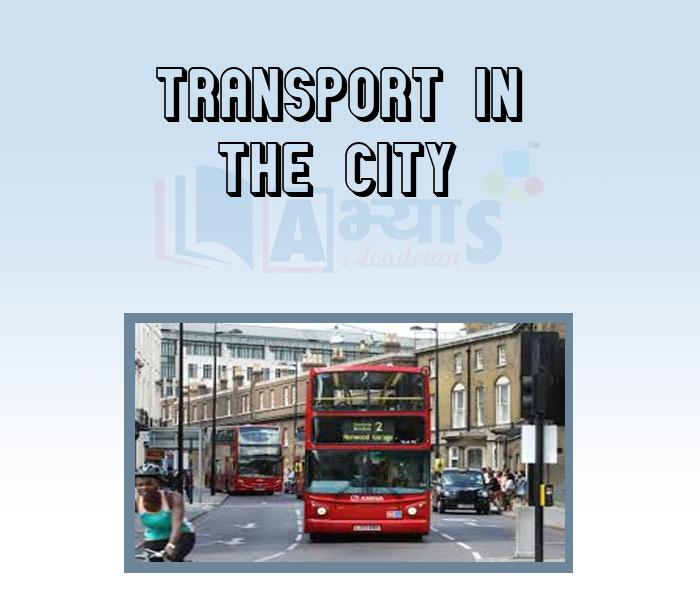Transport in the City










Transport in the City
Transport in the City: The London underground railway was introduce
Between the two World Wars (1919-39), the British authority took the responsibility to make houses for the working classes.
1 million houses mostly single-family cottage was built. The city extended beyond the range which further necessitated new forms of mass transport. The London underground railway partially solved the housing problem by carrying large number of people to and from the city. The first underground railway in the world opened on 10th January, 1863 between Paddington and Farrington Street in London. By 1880, the expanded train service was carrying 40 million passengers a year. In the initial stage, people were afraid to travel by this underground railways. Some thought, these were a menace to health due to asphyxiation and heat. Many felt that these ‘iron monsters’ added to the mess and unhealthiness of the city.
Displacement Due to Railways: Charles Dickens, in his novel Dombey and Son (1848) wrote about the massive destruction in the process of construction of underground railways. To make this railway, 900 houses had to be destroyed. Thus, the London tube railway led to a massive displacement of the poor people of London between the two World Wars. The underground railway became a huge success. As a result, the population in the city became more dispersed. Now, the people began to settle in better-planned suburbs and could travel to work.
Why was the development of the underground railway criticised?
Social change, which led to the need of the underground railway, was mainly due to industrialisation.
Industrialisation was the major factor responsible for urbanisation in London. London continued to expand and its population multiplied four-fold. due to this, the city had extended beyond the range from where people could travel to work. So the development of the underground railway was critisiced because
Students / Parents Reviews [10]
About Abhyas metholodology the teachers are very nice and hardworking toward students.The Centre Head Mrs Anu Sethi is also a brilliant teacher.Abhyas has taught me how to overcome problems and has always taken my doubts and suppoeted me.

Shreya Shrivastava
8thI have spent a wonderful time in Abhyas academy. It has made my reasoning more apt, English more stronger and Maths an interesting subject for me. It has given me a habbit of self studying

Yatharthi Sharma
10thMy experience with Abhyas is very good. I have learnt many things here like vedic maths and reasoning also. Teachers here first take our doubts and then there are assignments to verify our weak points.

Shivam Rana
7thIt has a great methodology. Students here can get analysis to their test quickly.We can learn easily through PPTs and the testing methods are good. We know that where we have to practice

Barkha Arora
10thMy experience was very good with Abhyas academy. I am studying here from 6th class and I am satisfied by its results in my life. I improved a lot here ahead of school syllabus.

Ayan Ghosh
8thIt was good as the experience because as we had come here we had been improved in a such envirnment created here.Extra is taught which is beneficial for future.

Eshan Arora
8thBeing a parent, I saw my daughter improvement in her studies by seeing a good result in all day to day compititive exam TMO, NSO, IEO etc and as well as studies. I have got a fruitful result from my daughter.

Prisha Gupta
8thMy experience with Abhyas academy is very good. I did not think that my every subject coming here will be so strong. The main thing is that the online tests had made me learn here more things.

Hiya Gupta
8thIt was a good experience with Abhyas Academy. I even faced problems in starting but slowly and steadily overcomed. Especially reasoning classes helped me a lot.

Cheshta
10thOne of the best institutes to develope a child interest in studies.Provides SST and English knowledge also unlike other institutes. Teachers are co operative and friendly online tests andPPT develope practical knowledge also.
